 |
 |
 |
| |
Randomized study comparing Peginterferon alfa2a plus Ribavirin and Peginterferon
alfa2b plus Ribavirin in naïve patients with chronic hepatitis C: Final results of the
MiIan Safety and Tolerability (MIST) Study
|
| |
| |
Reported by Jules Levin
AASLD, San Francisco, Oct 31- Nov 4 2008
Maria Grazia Rumi, Alessio Aghemo, Gian Maria Prati, Roberta D'Ambrosio, Maria Francesca Donato, Antonio Russo*, Nicoletta Cerami, Roberta Soffredini and Massimo Colombo
1st Division of Gastroenterology, Fondazione IRCCS Maggiore Hospital, University of Milan, Italy * Unit of epidemiology and biostatistics, San Carlo Hospital, Milan.
BACKGROUND
Pegylated interferon (PegIFN) and Ribavirin (Rbv) combination therapy is the standard of care for patients with chronic hepatitis C.
Currently, 2 pegylated IFNs are available which differ in size, structure of the
IFN and polyethilene-glycol molecules, pharmacokinetic, pharmacodynamic and biologic activity. Whether these structural and biological differences translate into a different safety and efficacy profile, is unknown.
Current guidelines in Italy make no broad recommendations for the application of one regimen over the other.
AUTHOR SUMMARY
The two regimens were comparable for safety and tolerability.
Peg-IFN a2a + Rbv treatment resulted in the highest rates of viral eradication in the overall population, emerging as an independent predictor of SVR
Following stratification by genotype, Peg-IFN a2a + Rbv appeared to be superior to Peg-IFN a2b + Rbv in patients with HCV 1 and HCV 2, only. The HCV 3 and HCV 4 arms were underpowered: however the SVR rates in genotype 3 patients were lower than expected (65% vs 69%)
AUTHOR CONCLUSIONS
Current policy at our Liver Center at Maggiore Hospital in Milan is to treat naïve patients with HCV 1 and HCV 2 with Peg-IFN a2a + Rbv.
Multicenter studies are planned to assess the most effective regimen in HCV 4 and the role of weight-based dosing of Rbv associated to Peg-IFN a2a in the treatment of HCV 3 patients.
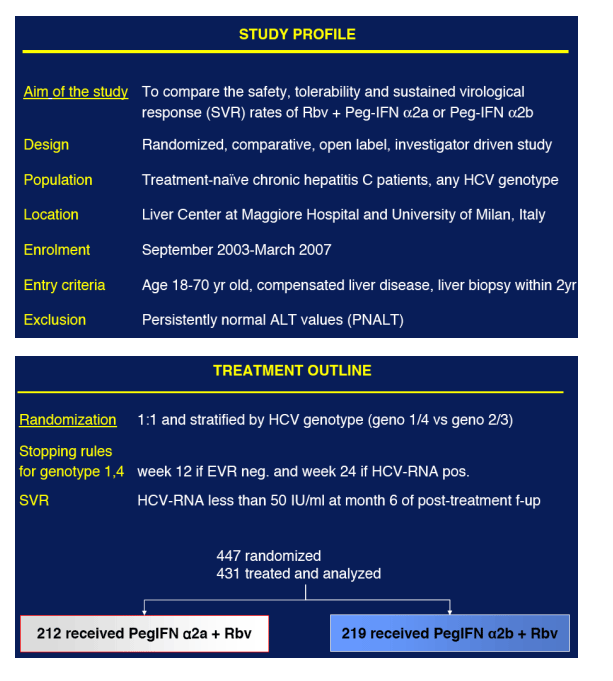
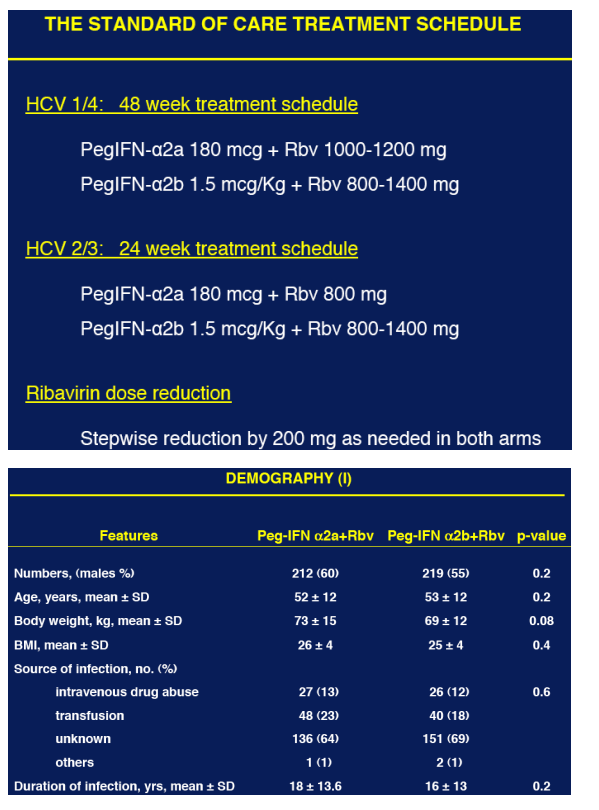
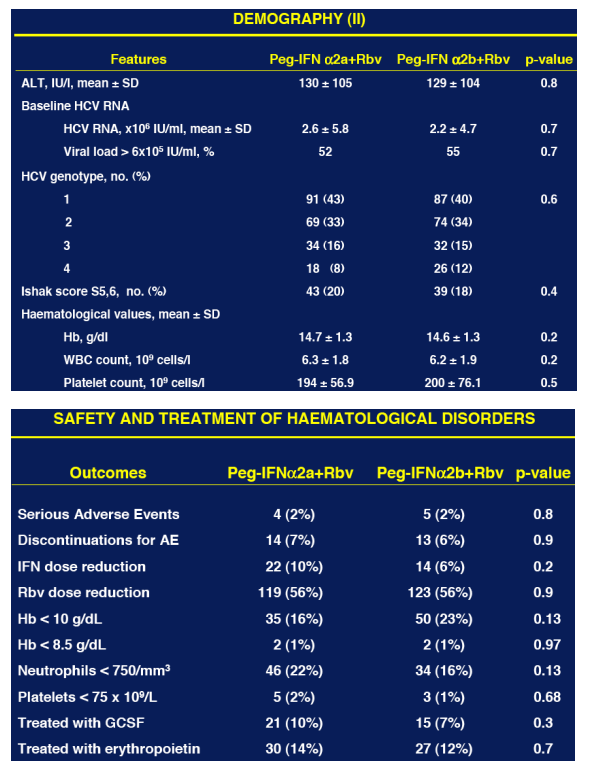
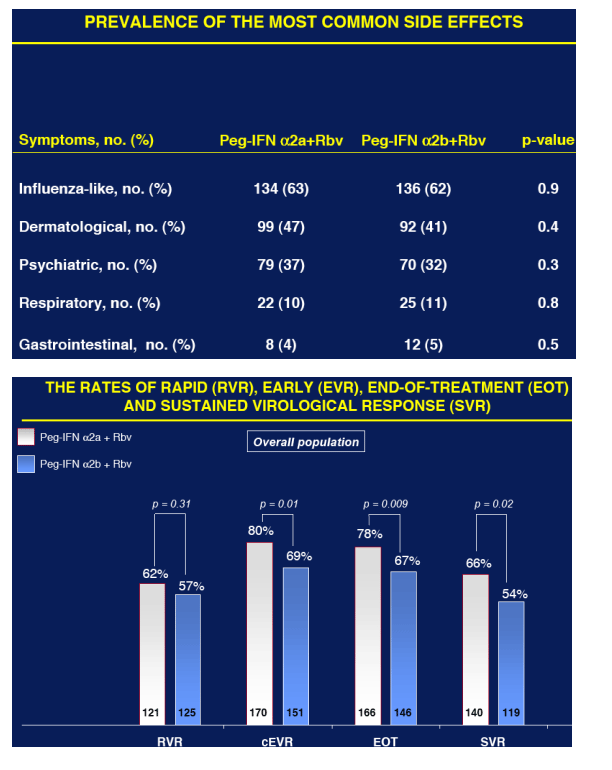
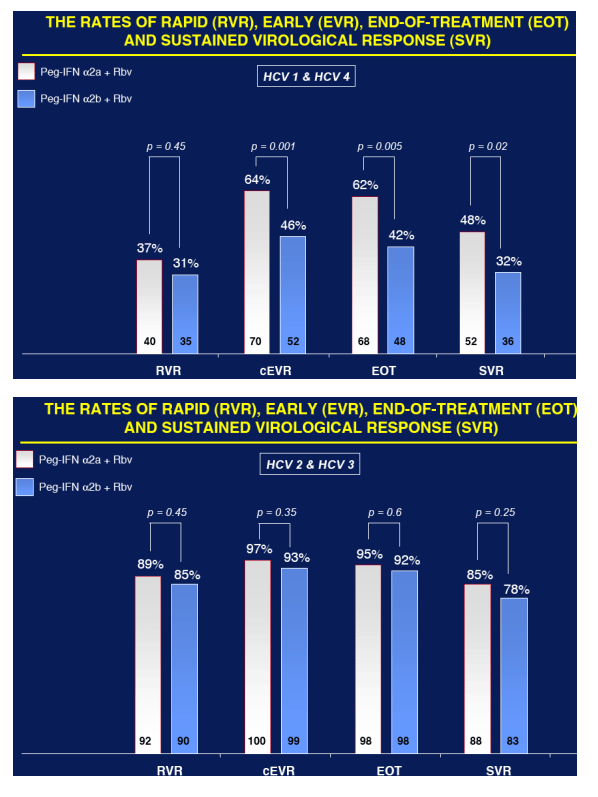
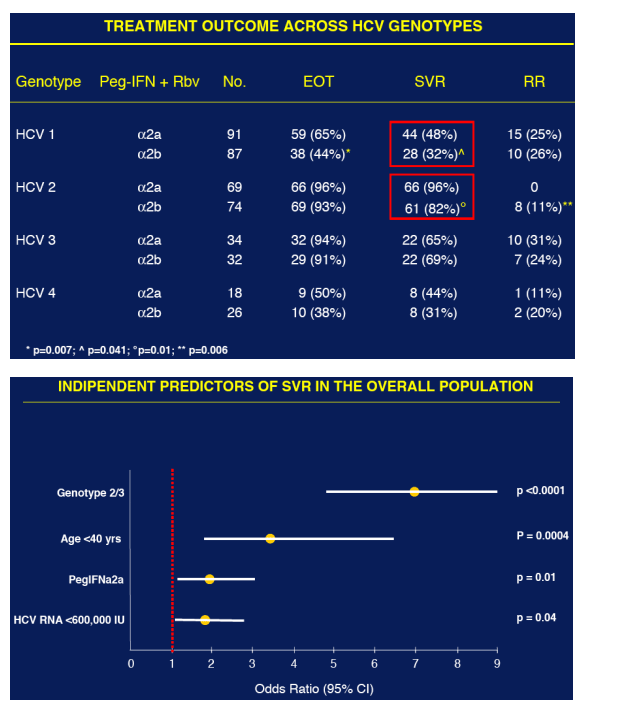
|
| |
|
 |
 |
|
|